Riga is the capital of Latvia, but over the centuries it played an important role in the history of several other European empires. This rich history makes for a lot of interesting stuff to visit today: from elegant art nouveau facades and an picturesque medieval city centre to a number of very remarkable museums. Trot Op! went for a city trip to Riga and came back with the seven best activities for you to enjoy.

Sometimes things can go fast in life, dear friends. When I was lazily scrolling through my mailbox a couple of weeks ago, my eagle eye suddenly noticed an e-mail asking me if I was in the mood for a two-day turbo trip to Riga. Well they didn’t have to ask me twice: Latvia was the only member of the Baltic States I hadn’t set foot in yet (here’s my article about Vilnius by the way). A mere ten days later I was on location, ready to tick off another country on the scratch map above my desk. And what do you know: there’s a lot to see and do in Riga. It’s not only the largest city in the Baltics, architecturally it’s perhaps the most remarkable. The historic city centre is a compact set of winding cobbled streets, cosy pubs and ornate spires. Around it – on the spot where the city walls used to stand – is a peaceful park separating the old town from the wide boulevards surrounding it. Here you’ll find most of the art nouveau facades Riga is known for. Beautiful neighbourhood to explore, but don’t venture too far away. The old Soviet blocks on the outskirts of the city might hurt the eyes a bit after seeing all the splendour that came before. Well, Paris isn’t all that pretty outside the centre either, isn’t it?
Rocking in Riga: 7 exciting tips for your next trip to Latvia
Like a woman who dated some bad dudes, Riga carries a lot of baggage from the past. The region changed hands abruptly quite a few times over the years. It was founded in the 12th century by a German bishop, and soon became an economic hub between the Russian Empire and the West. In the 16th century Sweden took over, after which Riga became the largest city of the Swedish Empire before even Stockholm – yes: Sweden actually had an empire. Then it was Russia’s turn to have a go at it, and it became the world’s most important timber port. Riga soon grew into the largest Russian city after Moscow and St. Petersburg. By the beginning of the 20th century, Riga had evolved into a lively metropolis, full of art cafes, dance clubs and salons full of cigar smoking intellectuals. Unfortunately, this city was bombed to smithereens during WWI, only to be occupied by the Nazis a few decades later. After the war Riga disappeared behind the iron curtain, until Latvia became independent in the early nineties. Even during those dark days, it remained a cultural beacon and a breeding ground for progressive thoughts. In short: Riga is a city with a story. Let’s discover some of it together.
1. Art nouveau in Riga: enjoy the city’s most beautiful facades


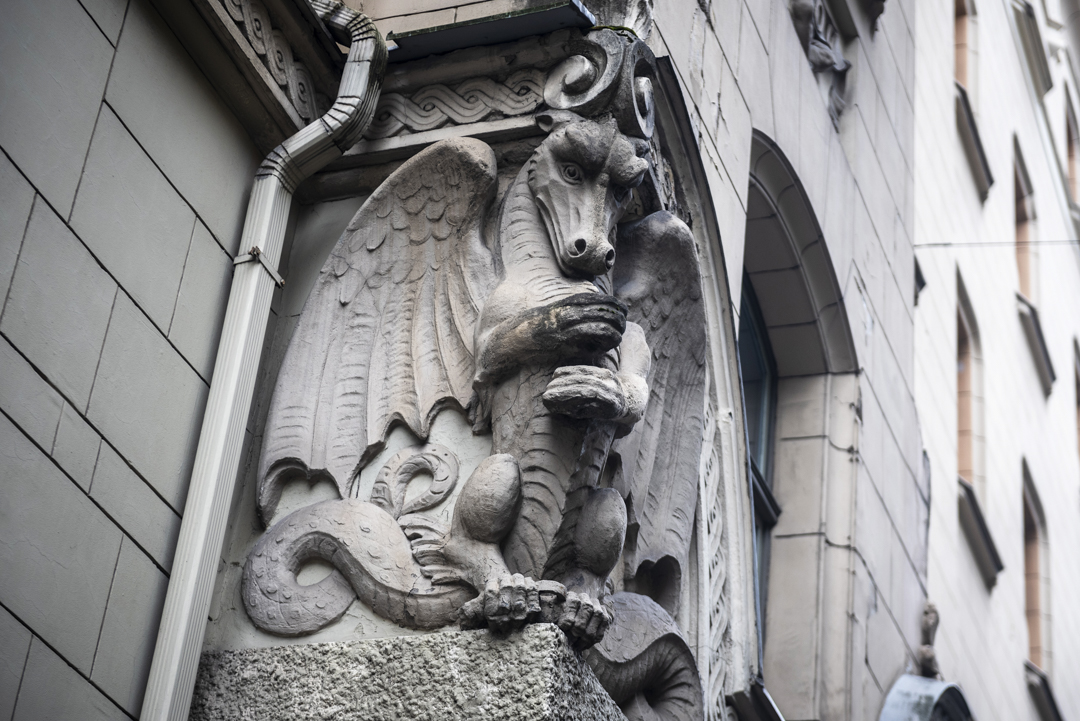

Riga not only comes with a dangerously cosy old town, there are more than 800 fantastic art nouveau facades for you to gawk at as well. You’ll find them mostly around Alberta Street, and in a few other neighbourhoods just outside the centre. Art nouveau or jugendstil became popular in almost all of Europe at the dawn of the 20th century – with the Belgian Victor Horta as its greatest architect. Brussels could have easily been the Art Nouveau capital of the world, but since they’ve enthusiastically demolished about half of the man’s buildings there already, this title now goes to Riga. Art nouveau is an eccentric style full of graceful swirls and strange faces above doors and windows: from naked nymphs to dragons, lions and ugly gargoyles. One of the main architects in Riga was Mikhail Eisenstein: father of director Sergei Eisenstein who made Battleship Potemkin. This probably doesn’t ring much of a bell, until you realize that every time a pram rolls down a flight of stairs in a movie or on TV (from The Untouchables to The Simpsons) they are paying homage to this flick. Yes, I have a master in Movie Science, and this is the first time I found a practical use for it. For all sorts of free walking tours in Riga, including one to the art nouveau district: www.rigafeetours.com
2. The Corner House: visit an old KGB headquarters
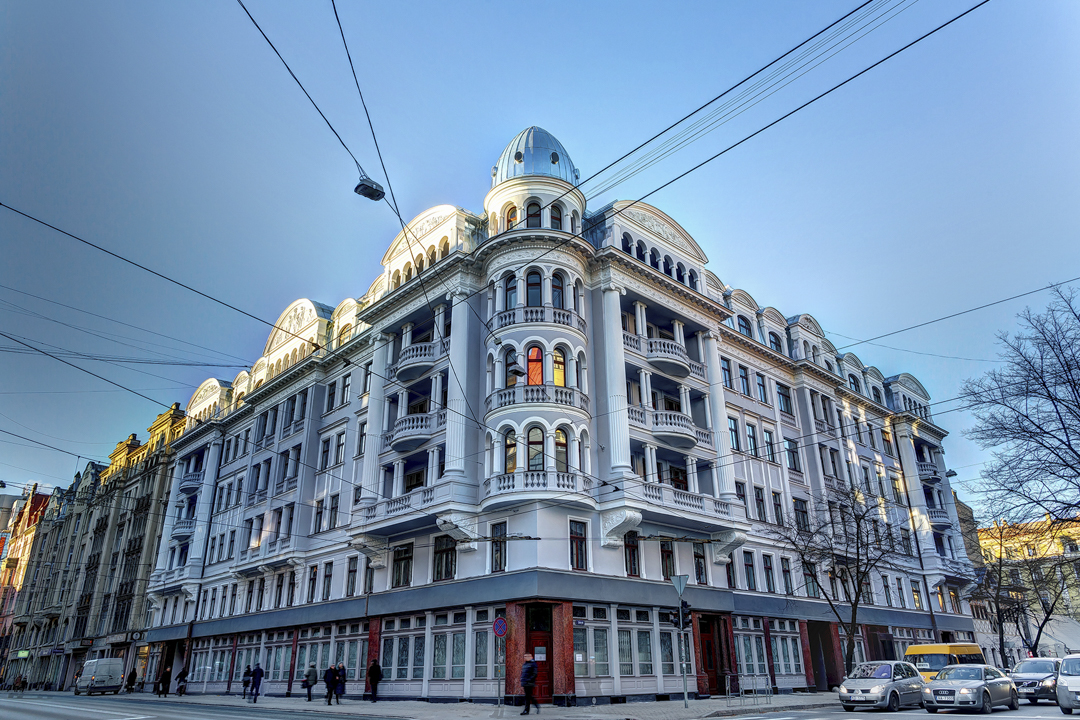
I don’t know if you’ve been following the news lately, but given the number of rich Russians falling out of all sorts of windows these days, the KGB seems to be back in full swing. In Riga you can reminisce about the glory days of this wonderful secret service as well, and you’ll do that in yet another art nouveau building in the city centre. The so-called Corner House used to serve as their local headquarters back in the day. Countless prisoners were held here and in many cases tortured for sometimes ridiculousl offenses. In a dark cellar – which was deliberately kept hot – these poor souls were crammed together, and often went mad from thirst and dehydration. After Latvia left the USSR in 1991, the building was closed. In 2012 it opened its doors again as a museum, with the aim of never forgetting its history. And look: it’s almost ten years later and the memories of the KGB are still fresh on the minds of most Latvians. I wonder why. www.okupacijasmuzejs.lv
3. First Crew: an enormous statue for space monkeys

Lance Armstrong may have been the first man on the moon – later won the Tour de France as well: great guy – but before he was allowed to take a giant leap for mankind on there, a few dozen pets had already been shot into space as a test. For the most part, this meant end of story for them. Even the dog Laika – the world’s most famous fluffy astronaut until our own Dirk Frimout was allowed to tag along – croaked just a few hours after launch due to the stress and heat. The first animals to return to earth alive and well were a couple of Russian turtles in 1968 – slow and steady winst the race. To commemorate those very first astronauts, a huge statue of a chimpanzee in a spacesuit was unveiled in Riga. It’s officially called First Crew but was nicknamed Sam soon after. At first it was part of a sculpture festival in Kronvaldapark, but it became so popular they gave it a permanent place in a residential area outside the old town. You can still visit it there today.
4. Castle of Light: Riga’s impressive new library
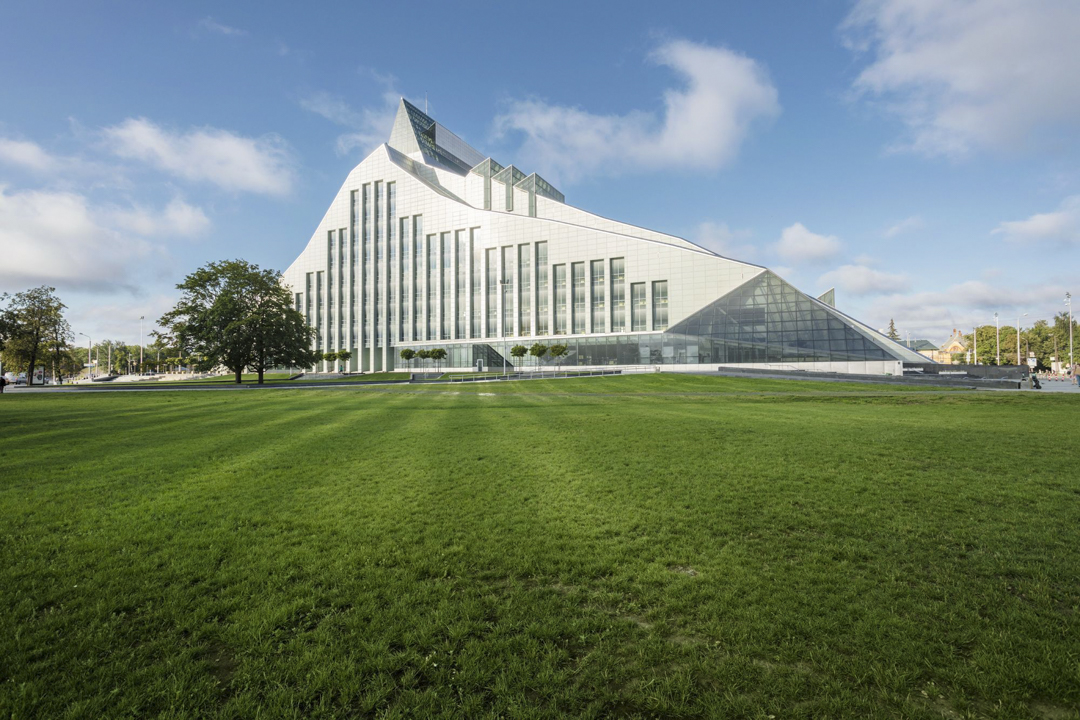
Occasionally sitting down with a good book instead of talking shit on Facebook all day long: it would do a lot of people good (especially you, KEVIN). That’s what they thought in Riga as well, which is why in 2014 they opened an almost comically gigantic library across the river. This is the so-called Castle of Light: a modern building shaped like a mountain with a flame on top. That glass flame is located on the two top floors, from where you can enjoy a beautiful view of the city every Saturday. The library itself is equally impressive, with an open space in the middle that allows you to look up past countless floors of bookshelves. More than six million books are catalogued here, which you can go and read in more than 1,000 different spots. The name of the building goes back to an old legend about a castle representing knowledge that sank into a lake, only to rise again when the darkness of war and occupation is overcome. It’s about time, guys. www.lnb.lv
5. Go shopping in the Riga Central Market
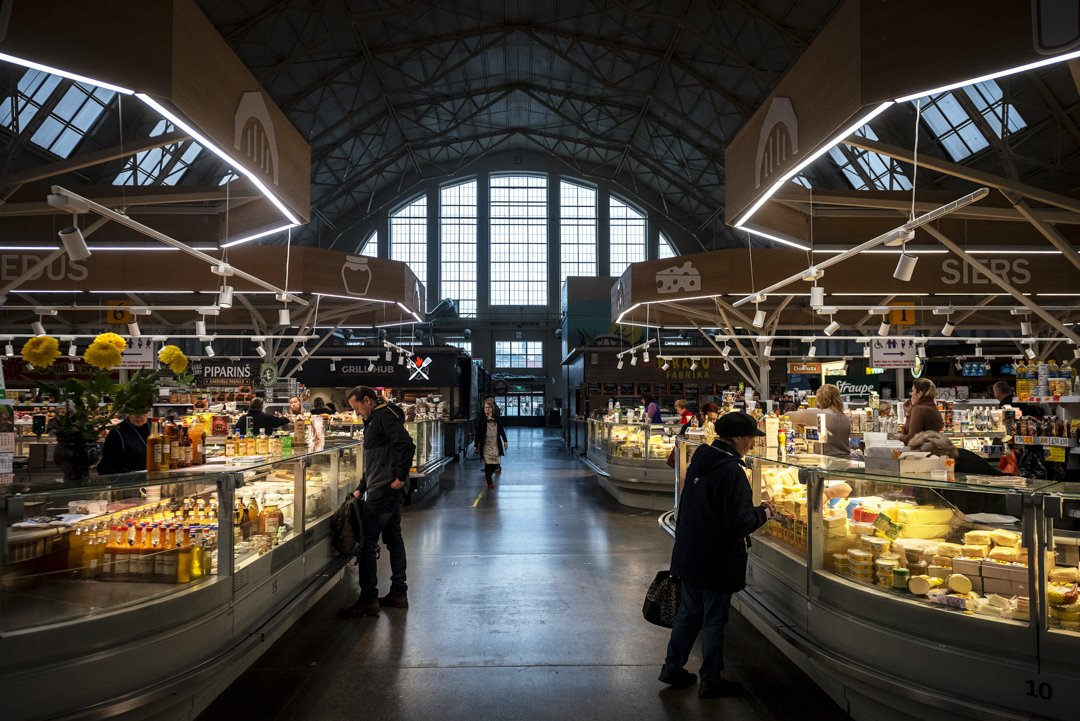
Soaking up some culture is all well and good, but sometimes a man just needs to do some shopping. And they’ve got the perfect place for that in Riga. The Central Market in – yes indeed – the city centre, is the largest covered market place in Europe. Five monstrous hangars are waiting for you here, plus a lot of outside stalls. These buildings originally served as parking spaces for zeppelins, but after a small incident with the Hindenburg, this particular means of transport became somewhat less popular. The hangars soon stood vacant, and eventually were moved from the city of Vainode to Riga in 1930. Today, more than 70,000m2 full of merchants have set up shop here: handily divided into a meat, fish and vegetable market. All built in neoclassical and Art Deco style by the way: go and have a look.
6. Marvel at a two headed dog in Riga’s Museum of the History of Medicine



A certain Vladimir Demikhov once came up with the perfectly normal idea of attaching a dog’s head to the neck of another one and then connecting their two circulatory systems. That sounds like some sick Frankenstein bullshit, but the dogs miraculously survived for four whole days and the man became one of the greatest pioneers in organ transplantation research. This now stuffed monstrosity can be viewed in the Museum of the History of Medicine – just like a lot of other stuffed animals and one of the space monkeys mentioned above. The anatomical section is also worth a visit (for those who aren’t too squeamish): an extensive collection of deformed limbs, organs and embryos on formaldehyde. There’s also a whole collection of plaster casts of lepers to marvel at. The perfect recipe for a pleasant afternoon. Those who like it a little less explicit can visit an interesting exhibition on space medicine instead. There’s something for everyone, guys. www.mvm.lv
7. Day trips from Riga: visit fancy Jurmala beach
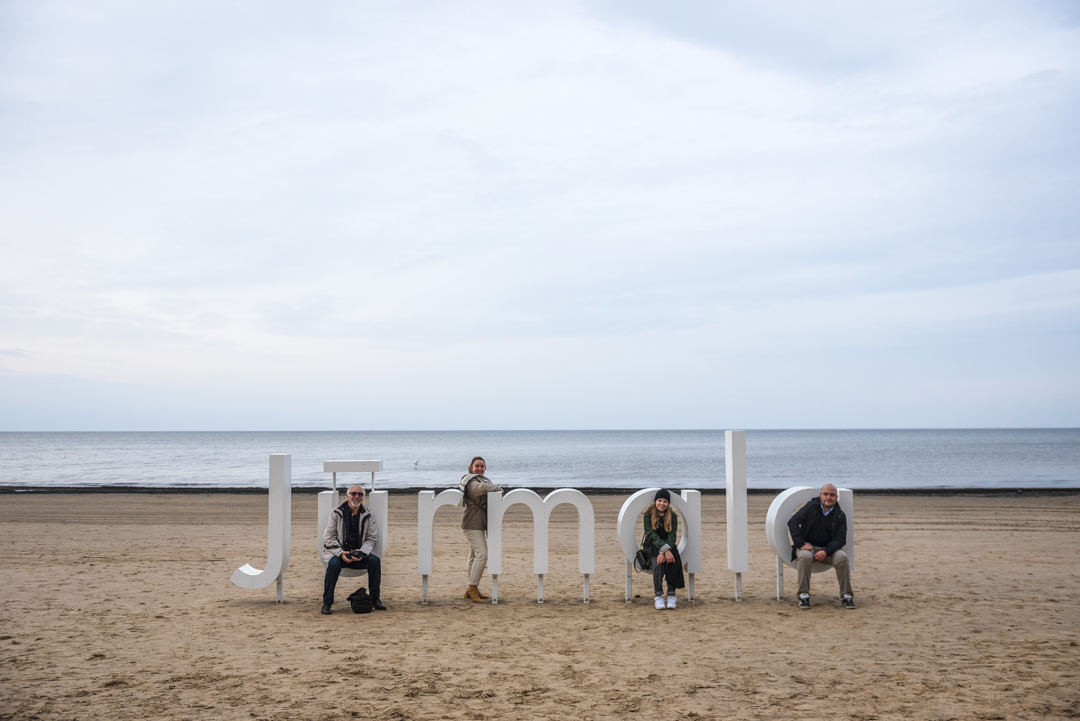
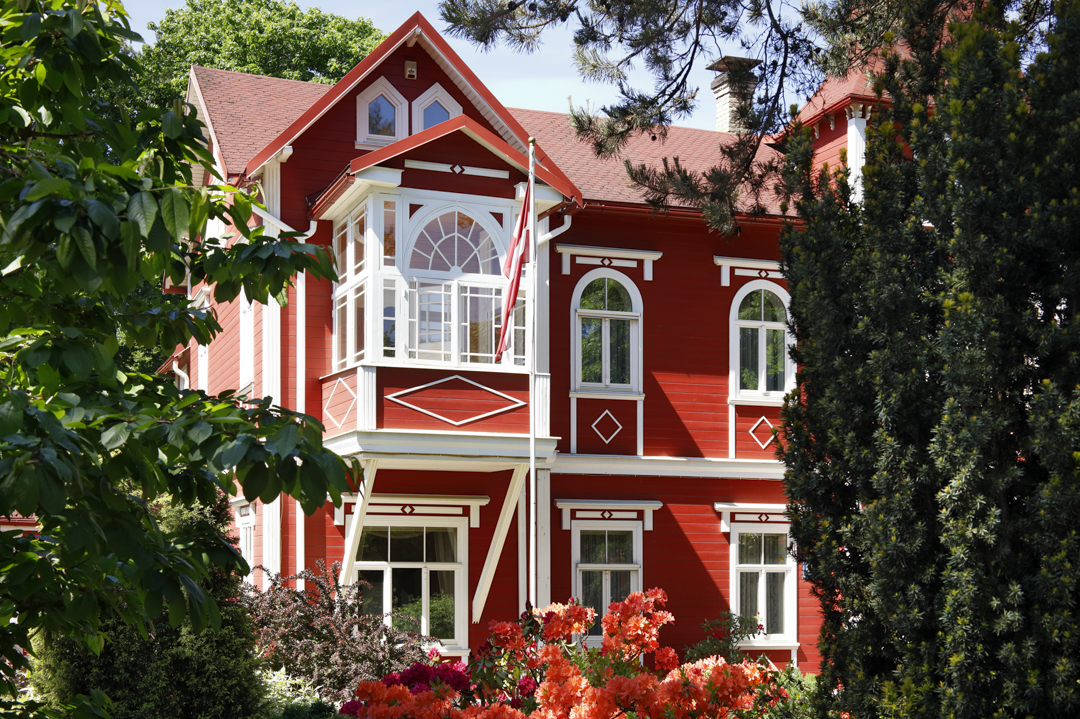
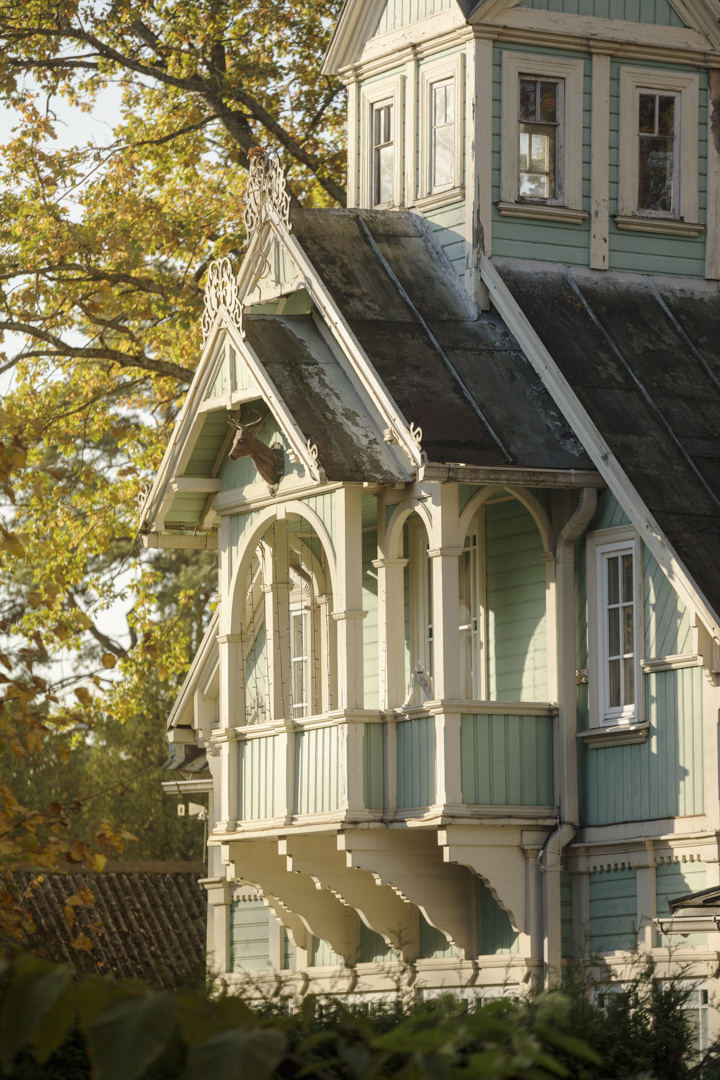
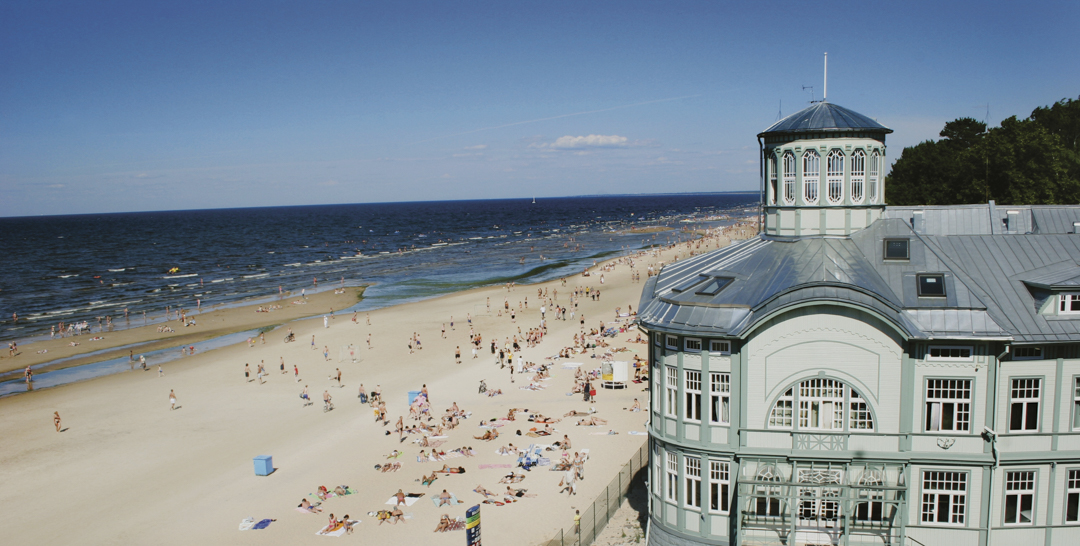
Tired of the hectic city, want to get a breath of fresh air and dive bomb your dad bod into the Baltic Sea? Go ahead and drive to Jurmala, just half an hour from Riga. This is the most popular and fashionable seaside resort in the country. Jurmala comes with a long white beach and a whole bunch of fancy wooden houses built under its tall pine trees. Even in the heydays of communism, this used to be a jetset destination full of rich Russians and apparatchiks. Want to get more out of it than just a tan? Venture into the nearby forest and climb the watchtower (spoiler: you’ll see trees) or explore the climbing course with your kids. Perfect day out for those who want to get away from the hustle and bustle for a while. Just plan your visit in the right season or when it’s sunny, otherwise you’ll be there practically by yourself like us. Which has its charms as well of course.
Hotels in Riga and practical information

Trot Op! was booked in Pullman Riga Old Town Hotel for two nights. Great hotel (five stars) and I had a splendid steak sandwich in the restaurant. No complaints!
For more information about Latvia and Riga as a destination, surf to www.latvia.travel.
We flew straight to Riga from Brussels Airport with AirBaltic: www.airbaltic.com,
It was a pretty short trip and the weather wasn’t on my side. This is why for the first time ever, not all pictures in this blog post were made by me. I got some extra ones through the lovely people at the tourist office.
The following photographers should be mentioned: Lauris Aizupietis for the First Crew picture; Reinis Hofmanis for the library; Reinis Hofmanis (again), Ansis Starks and the Jurmala City Council for the Jurmala pictures.
If you’re interested in some other European destinations, read my articles on Lodz, Porto and South Limburg. Want to go a little further? Click here for pieces on Swaziland, Malawi and Sao Tome.
Are you from Riga? Did I forget a couple of things? Was it Louis Armstrong who was the first man on the moon (awesome on the trumpet too by the way: great guy)? Let me know in the comments below.















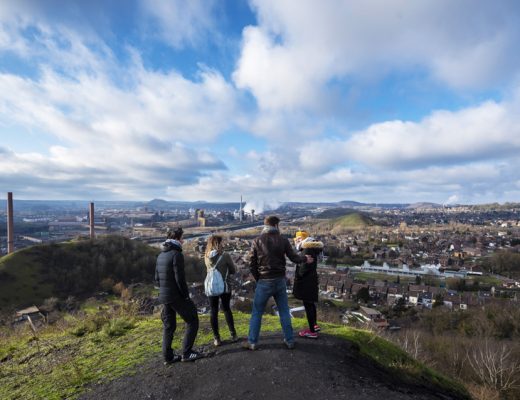



2 Comments
Melis Etienne
October 23, 2022 at 8:48 pmIk gun het je van harte en ben fier dat ik van je reportage kan genieten.
Jonathan Ramael
October 27, 2022 at 1:50 pmDankjewel Mijnheer Melis! 🙂